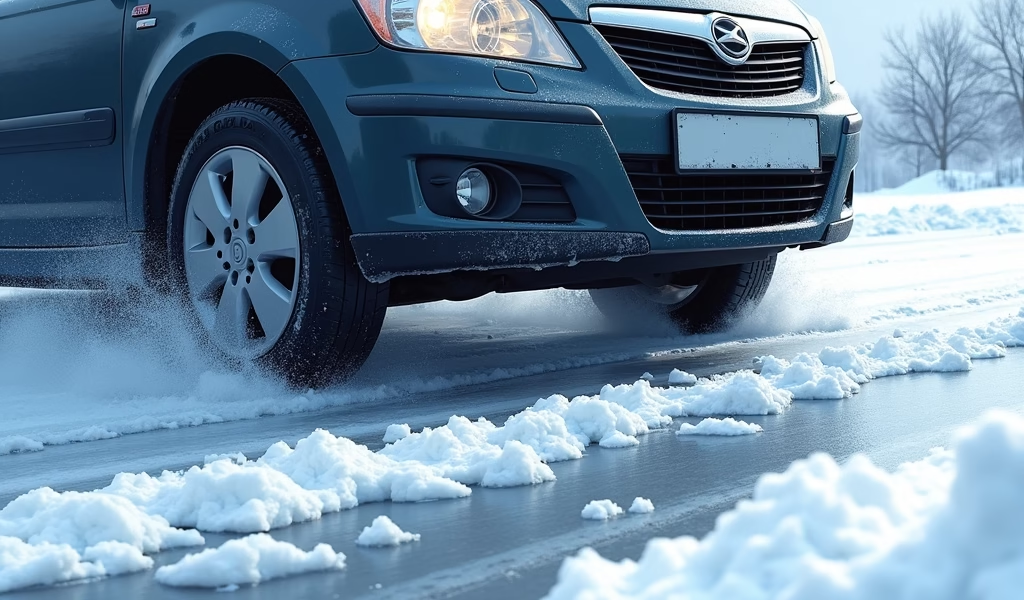Overview
Winter tires provide superior safety in cold temperatures (below 45°F) with specialized rubber compounds and tread patterns that significantly improve traction, braking, and cornering on snow and ice, while all-season tires offer convenience and cost savings for those in milder climates with infrequent winter conditions. The choice between them depends on your specific region, driving patterns, and personal prioritization of safety versus convenience, with proper maintenance and seasonal switching being critical for maximizing the lifespan and performance of either option.
Table of Contents
- Winter Tires vs All Season: The Fundamental Differences
- How Winter Tires Work: The Science Behind the Grip
- Performance Comparison: Winter vs All Season Tires
- Cost Considerations: Beyond the Price Tag
- Regional Considerations: Where You Live Matters
- When to Make the Switch: Timing Your Tire Change
- Maintenance Tips for Both Tire Types
- Conclusion: Making Your Final Decision
- Frequently Asked Questions
Winter Tires vs All Season: The Fundamental Differences
The debate between winter tires vs all season options reminds me of choosing between specialized tools and a Swiss Army knife. One freezing morning last winter, my neighbor Tom confidently drove off with his all-seasons while I waited for my winter tires to be installed. Later that day, I spotted his car nestled against a snowbank – a stark reminder that sometimes, specialization matters.
Winter tires and all-season tires differ in three critical ways: rubber compound, tread pattern, and siping details. Winter tire compounds remain pliable in freezing temperatures – imagine the difference between a soft, grippy eraser and one that’s been left in the freezer. The specialized winter tire compound chemistry contains higher natural rubber content and special silica formulations that maintain flexibility even when temperatures plummet below 45°F (7°C).
All-season tires, by contrast, are like versatile actors who can play many roles adequately but excel in none. They feature moderate tread depths and rubber compounds designed for reasonable performance across varied conditions but compromise ultimate grip in extreme environments. They’re engineered for convenience, not specialized performance.
The tread patterns tell another story entirely. Winter tires feature deeper grooves carved like miniature canyons into the rubber, creating numerous biting edges that grip snow and slush like tiny teeth. All-season treads, while serviceable, lack this aggressive approach to winter traction. Their more conservative design prioritizes quiet operation and long-term wear over maximum grip in challenging conditions.
You might be wondering: “Couldn’t I save money by just using all-seasons year-round?” It’s a reasonable question, especially if you’re in an area with mild winters. But as research from Tire Rack has shown, the stopping distance on ice with all-season tires can be up to 30% longer than with proper winter tires – the difference between a close call and a collision.
How Winter Tires Work: The Science Behind the Grip
Winter tires work like specialized winter athletes compared to all-season generalists. The magic begins at the molecular level, where specialized polymers and silica compounds maintain flexibility in temperatures that would render all-season rubber as stiff as old leather. This flexibility is crucial – it allows the tire to conform to road surfaces, creating friction where ordinary tires would skate across like hockey pucks.
The thousands of tiny slits cut into winter tires’ tread blocks – called sipes – act like miniature claws that grab onto snow and ice. These sipes open and close as the tire rotates, creating a biting action that digs into winter surfaces. It’s like the difference between walking on ice with smooth-soled dress shoes versus boots with aggressive treads – one slips, the other grips.
But it’s not just about the grip. Modern winter tires employ sophisticated tread patterns that actively evacuate slush and water from beneath the contact patch. These channels function like tiny aqueducts, diverting moisture away from where rubber meets road. Without them, a dangerous layer of water can form between tire and ice – a phenomenon called hydroplaning that transforms your vehicle from transportation to toboggan.

Performance Comparison: Winter vs All Season Tires
When the mercury drops below 45°F, the performance gap between winter tires and all-season options widens like a canyon. In braking tests on snow-covered roads, vehicles with winter tires consistently stop up to 30-40% shorter – imagine that difference when a child darts into the street or a deer leaps from the forest edge.
Acceleration capabilities tell a similar story. The deep, directional treads of winter tires claw through snow with determined efficiency, while all-seasons often spin helplessly, searching for traction that isn’t there. It’s reminiscent of watching someone try to climb a muddy hill in dress shoes versus proper hiking boots.
Cornering stability – perhaps the most underappreciated aspect of winter driving safety – shows dramatic differences between the two tire types. All-season tires begin to lose their cornering grip at temperatures where winter tires are just hitting their stride. The sensation is unmistakable: where winter tires track confidently through curves, all-seasons begin to push wide, the steering feeling vague and unresponsive.
The difference becomes even more pronounced on ice. Winter tires, with their specialized compounds and studded tire options in some regions, provide remarkable grip on surfaces where all-seasons slide with alarming ease. According to NHTSA data, proper winter tires can reduce winter-related accidents by a significant margin.
However, the tables turn when temperatures rise. Above 45°F, winter tires begin to wear more quickly, their softer compounds surrendering to warm asphalt like ice cream on a hot sidewalk. Their specialized treads, so effective in snow, become noisy on dry pavement and can negatively impact fuel economy. All-seasons reclaim their advantage in these conditions, offering quieter operation and more responsive handling on dry, warm roads.
Cost Considerations: Beyond the Price Tag
The initial investment in winter tires often causes sticker shock – typically $600-$1,000 for a quality set, plus potential costs for separate wheels. This upfront expense makes many drivers hesitate, clinging to their all-seasons like a comfortable old jacket. But this view misses the bigger financial picture.
Consider my experience with two identical sedans in our company fleet. One ran all-seasons year-round, while the other switched between summer and winter rubber. After three years, the all-season vehicle had gone through two complete tire sets, while the seasonal switcher’s tires showed only moderate wear. The math was clear – using the right tire for each season actually extended overall tire life.
Winter tires aren’t an added expense so much as a distributed one. Your all-season tires last longer when they’re not subjected to winter conditions they weren’t designed for. When you factor in the reduced wear on your primary tires, the cost difference narrows considerably over the life of your vehicle.
Then there’s the hidden cost of accidents. A single winter fender-bender can cost more than several sets of winter tires when you consider insurance deductibles, increased premiums, and potential lost work time. Even minor repairs on modern vehicles can run into thousands of dollars with today’s complex bumper systems and integrated sensors.
Some insurance companies have begun recognizing this reality by offering discounts to drivers who use winter tires. In Quebec, Canada, where winter tire use is mandatory, insurance claims for winter accidents dropped significantly after the law was implemented. Your safety – and your wallet – might benefit from this investment more than you realize.
Regional Considerations: Where You Live Matters
Your geography should drive your tire decision as surely as a map guides a journey. In regions like Minnesota or Michigan where winter arrives with a vengeance and stays for months, winter tires aren’t a luxury – they’re as essential as your home’s heating system. The consistently cold temperatures and regular snowfall create conditions where all-season tires simply can’t provide adequate safety.
Contrast this with milder climates like the Pacific Northwest or parts of the South, where snow makes brief, occasional appearances. Here, the calculus shifts. For drivers in Portland or Atlanta who might see just a handful of snowy days annually, the investment in winter rubber might seem excessive – like buying a snowblower for an inch of annual snowfall.
But temperature, not just snowfall, should guide your decision. Even in areas with minimal snow, if temperatures regularly drop below 45°F, winter tires provide tangible benefits. Cold rain on cold pavement creates nearly invisible hazards that winter compounds handle far better than all-season alternatives.
Your specific driving patterns matter too. If your commute includes steep hills, shaded areas that hold ice longer, or rural roads that receive less frequent plowing, winter tires provide insurance against these specific challenges. I recall a client whose driveway sloped steeply toward a busy road – the winter tires were worth every penny the first time she needed to stop at the bottom of that icy slope.
In mountainous regions, the requirements can change dramatically with elevation. A drive that begins in rain-soaked valleys might end in snow-covered mountain passes. For frequent mountain travelers, winter tires represent a prudent preparation for the rapidly changing conditions these journeys entail. Many mountain passes now require either winter tires or chains during storm events – arriving unprepared can mean turning back or facing substantial fines.

When to Make the Switch: Timing Your Tire Change
Timing your seasonal tire change is like preparing for a weather shift before it arrives – being proactive rather than reactive pays dividends. The old mechanic’s wisdom holds true: install winter tires when fall leaves begin to drop, and remove them when spring flowers start to bloom. This poetic guideline translates to temperatures, not calendar dates.
When overnight temperatures consistently dip toward 45°F (7°C), it’s time for winter rubber. This often means October or November in northern regions, potentially later in milder climates. Waiting for the first snowfall is a common mistake – like waiting for rain to start before buying an umbrella. By then, appointment schedules at tire shops resemble concert ticket lines, and you might be driving in dangerous conditions on inappropriate tires.
Spring timing requires equal attention. Remove winter tires when temperatures consistently climb above 45°F. Driving winter tires in warm conditions is like wearing snow boots in summer – uncomfortable, inefficient, and unnecessarily wearing on specialized equipment. The soft compounds will wear rapidly on warm asphalt, potentially destroying a set of expensive tires in just one warm season.
The transition periods – those weeks when temperatures dance above and below the 45°F threshold – present a dilemma. During these times, follow weather trends rather than daily fluctuations. If the weekly forecast shows a decisive warming trend, it’s likely time for the change. Conversely, if temperatures are dropping week by week, prepare your winter set.
Storage between seasons demands attention to preserve your investment. Tires should rest in cool, dry locations away from direct sunlight and ozone sources like electric motors. Some drivers invest in tire bags or covers to protect their off-season set. Proper storage transforms tires from consumable expenses into long-term investments, often extending their useful life by several seasons.
Maintenance Tips for Both Tire Types
Proper tire maintenance resembles preventive health care – addressing small issues before they become major problems. Regular pressure checks stand as the cornerstone of tire health, particularly during temperature fluctuations when pressure can drop significantly. Remember that cold temperatures reduce tire pressure – roughly 1 PSI for every 10°F drop in temperature – potentially leaving you underinflated without warning.
Check your tire pressure at least monthly, preferably when tires are cold. Proper inflation improves handling, extends tire life, and optimizes fuel economy – a trifecta of benefits from a five-minute task. Digital gauges offer greater accuracy than the pencil-style variety and represent a worthy investment for any vehicle owner.
Rotation patterns differ between tire types and drive configurations. Winter tires benefit from more frequent rotation – every 4,000-5,000 miles versus the typical 6,000-8,000 miles for all-seasons – due to their softer compounds and the varied traction demands of winter driving. Front-wheel-drive vehicles particularly wear front tires more aggressively in winter conditions as they handle both propulsion and steering.
Tread depth wear indicators offer vital information about your tire’s remaining lifespan. While the legal minimum stands at 2/32″, winter tires lose significant performance below 6/32″. Think of tread depth like the bristles on a brush – as they wear down, their ability to sweep away snow and slush diminishes proportionally.
Inspect for abnormal wear patterns that might indicate alignment or inflation issues. Uneven wear across the tread surface suggests alignment problems, while wear concentrated at the edges points to chronic underinflation. Center-line wear often indicates overinflation. Addressing these issues promptly not only extends tire life but improves safety and handling characteristics.
When storing seasonal tires, consider investing in wheel storage racks to prevent flat-spotting and deformation. If tires are mounted on rims, store them stacked horizontally. Unmounted tires should stand vertically, rotated quarterly to prevent settling. These simple storage practices extend the life of your seasonal investments substantially, turning what might be a 3-season tire into one that serves reliably for 5 or more seasons.
Conclusion: Making Your Final Decision
The winter tires vs all season debate ultimately comes down to a deeply personal calculation of safety, economics, and regional factors. Like choosing between specialized tools and multipurpose alternatives, the right answer depends on your specific circumstances and priorities.
The evidence consistently shows that in true winter conditions – temperatures below 45°F, regular snowfall, or icy conditions – dedicated winter tires provide measurably superior safety performance. They stop shorter, corner more predictably, and accelerate more confidently when the mercury drops. This performance gap isn’t marginal – it can be the difference between a controlled stop and a collision.
For those in milder regions with limited winter weather, all-season tires present a reasonable compromise. Their convenience and versatility make them suitable for areas where severe conditions arrive rarely and depart quickly. The key question becomes not just whether you’ll encounter snow, but how frequently you’ll drive in temperatures below that crucial 45°F threshold.
Remember that winter tires represent an investment in safety that extends beyond your vehicle to protect everyone sharing the road. The improved control and reduced stopping distances benefit not just you but pedestrians, cyclists, and other drivers who share your winter travels.
Whatever your decision, proper maintenance and timely seasonal changes will maximize both safety and the lifespan of your tires. The best tire is always the right one for the conditions you face, properly maintained and replaced when its service life concludes.
As we mechanics often tell our customers: tires represent your only contact with the road – four patches of rubber each about the size of your hand. In challenging winter conditions, investing in specialized equipment for those crucial contact patches makes profound sense, both financially and for the irreplaceable safety of you and your loved ones.
Frequently Asked Questions
How much do winter tires actually improve safety?
Winter tires can reduce stopping distances on snow and ice by 30-40% compared to all-season tires. This improvement can be the difference between a safe stop and a collision in emergency situations.
Can I use winter tires year-round to avoid changing them?
Using winter tires year-round is not recommended as they wear extremely quickly in warm temperatures and provide reduced performance. The soft compounds that excel in winter will deteriorate rapidly above 45°F.
Are “all-weather” tires a good compromise between winter and all-season?
All-weather tires offer better winter performance than all-seasons while providing acceptable warm-weather handling. They’re a viable middle ground for regions with mild winters but still don’t match dedicated winter tires in severe conditions.
Do I need new rims for my winter tires?
While not strictly necessary, separate wheels for winter tires make seasonal changes easier and protect your primary rims from winter salt exposure. Steel wheels are often recommended as an economical option for winter use.
How many seasons do winter tires typically last?
With proper care and storage, winter tires typically last 3-4 seasons depending on driving conditions and mileage. Regular rotation and careful seasonal storage significantly extend their usable lifespan.


Pingback: how much are snow tires: 5 Smart Tips - knowsyourcar.com